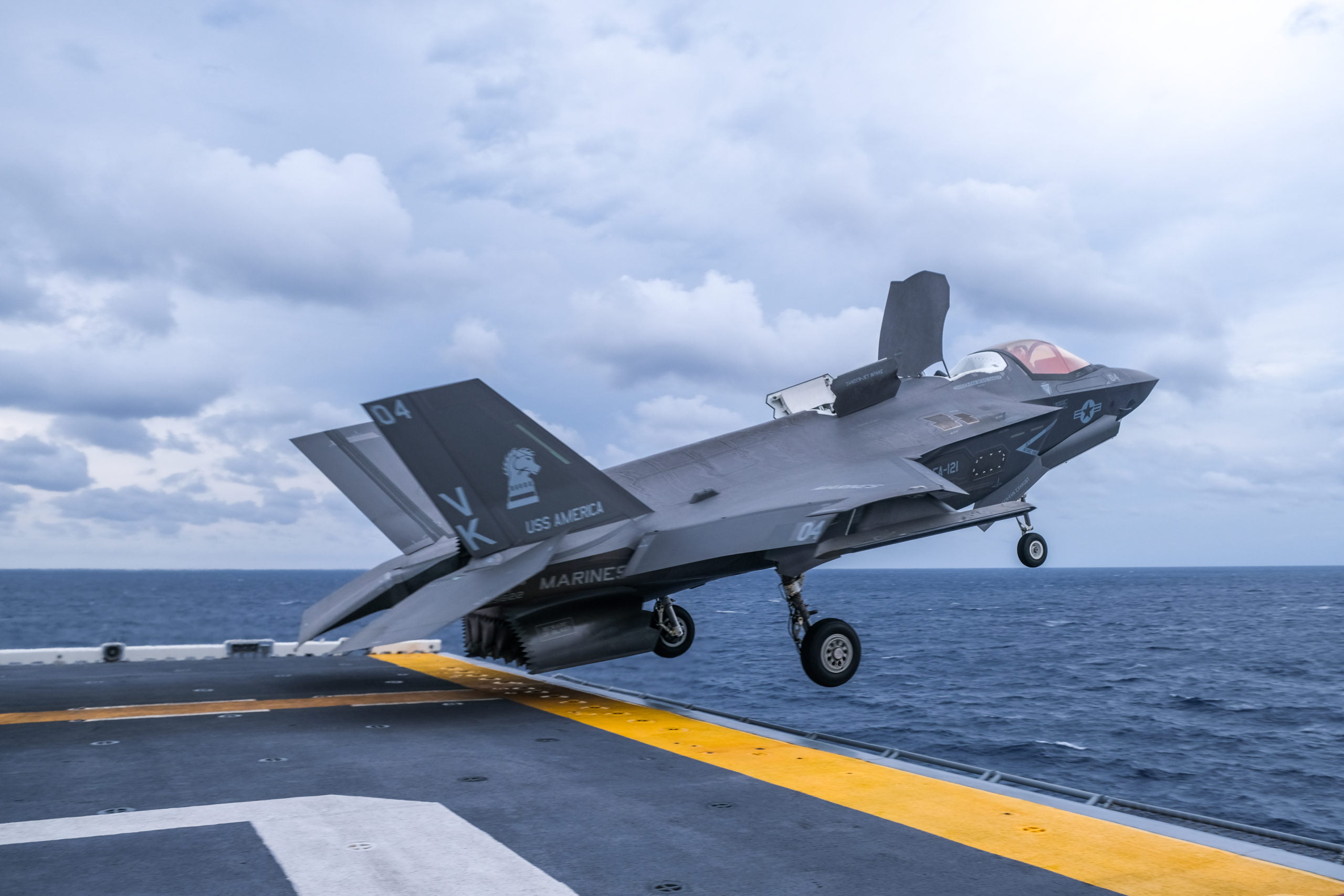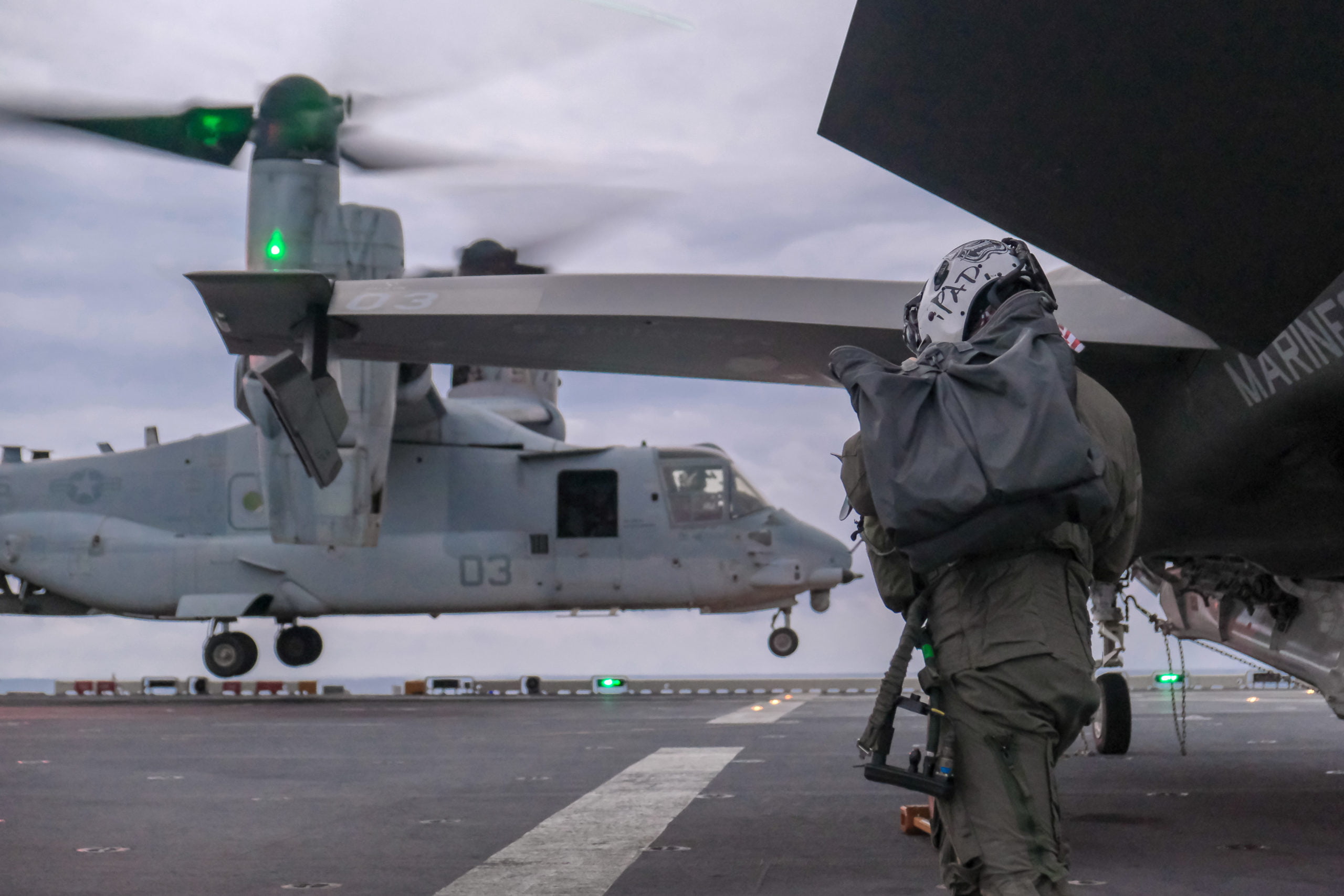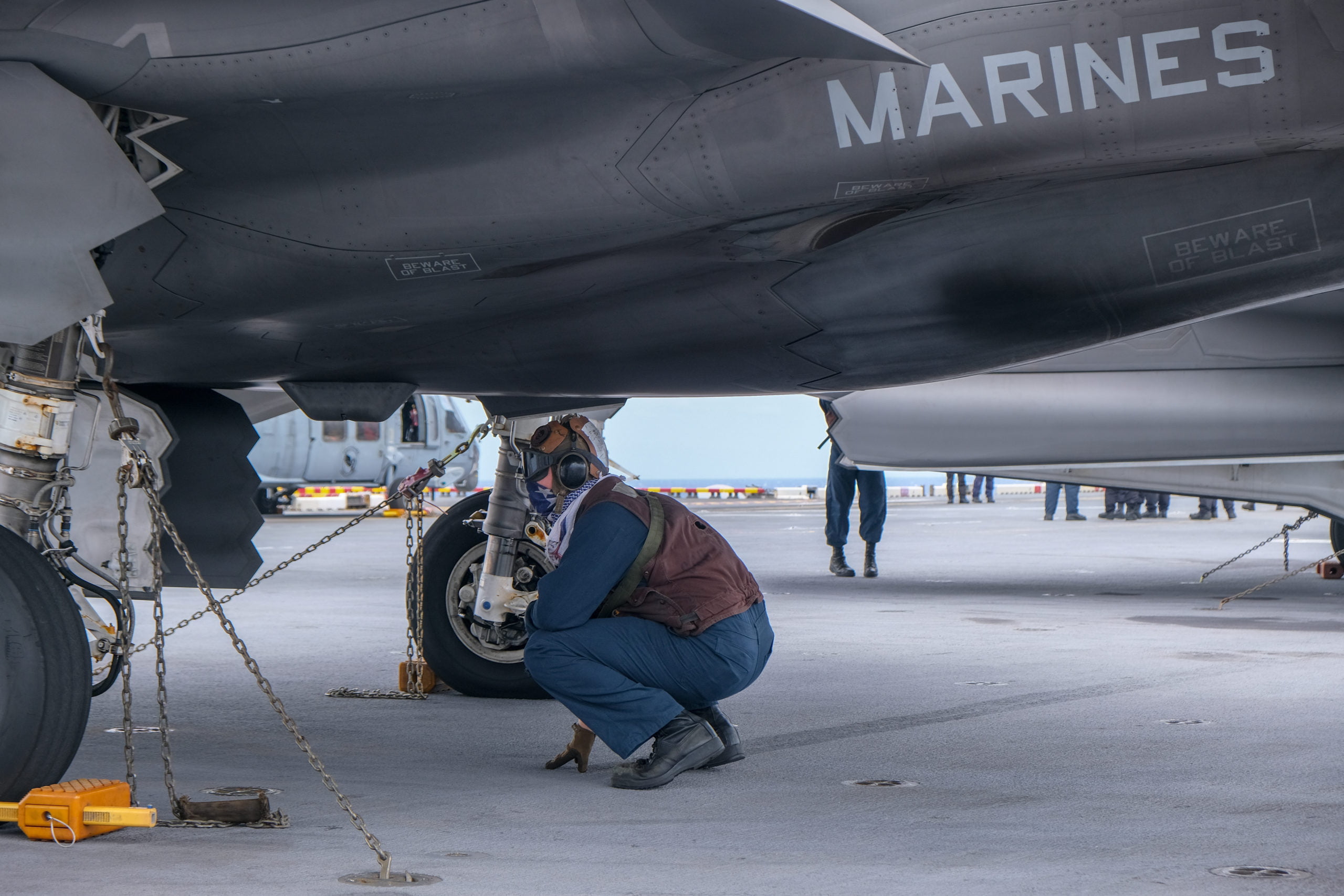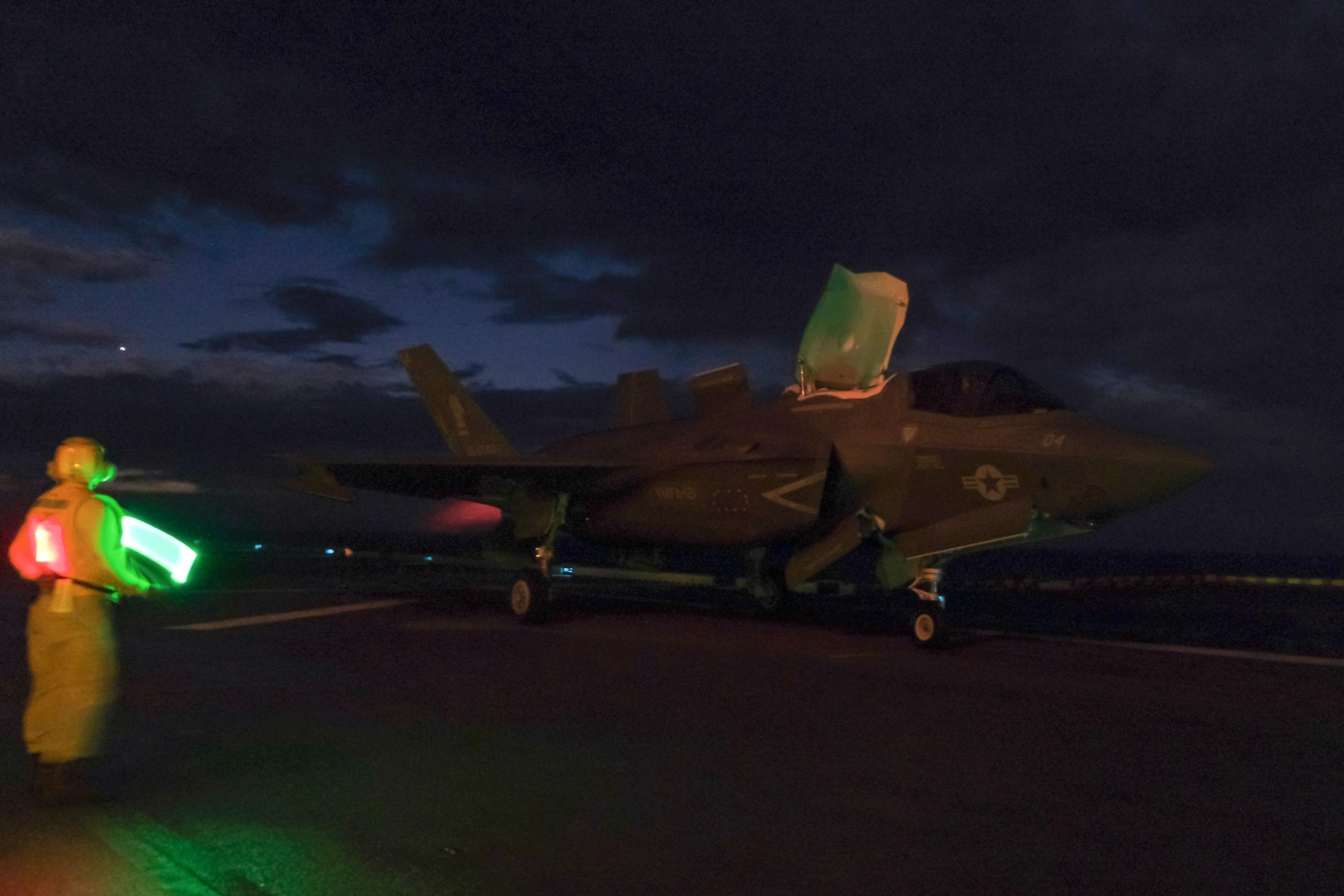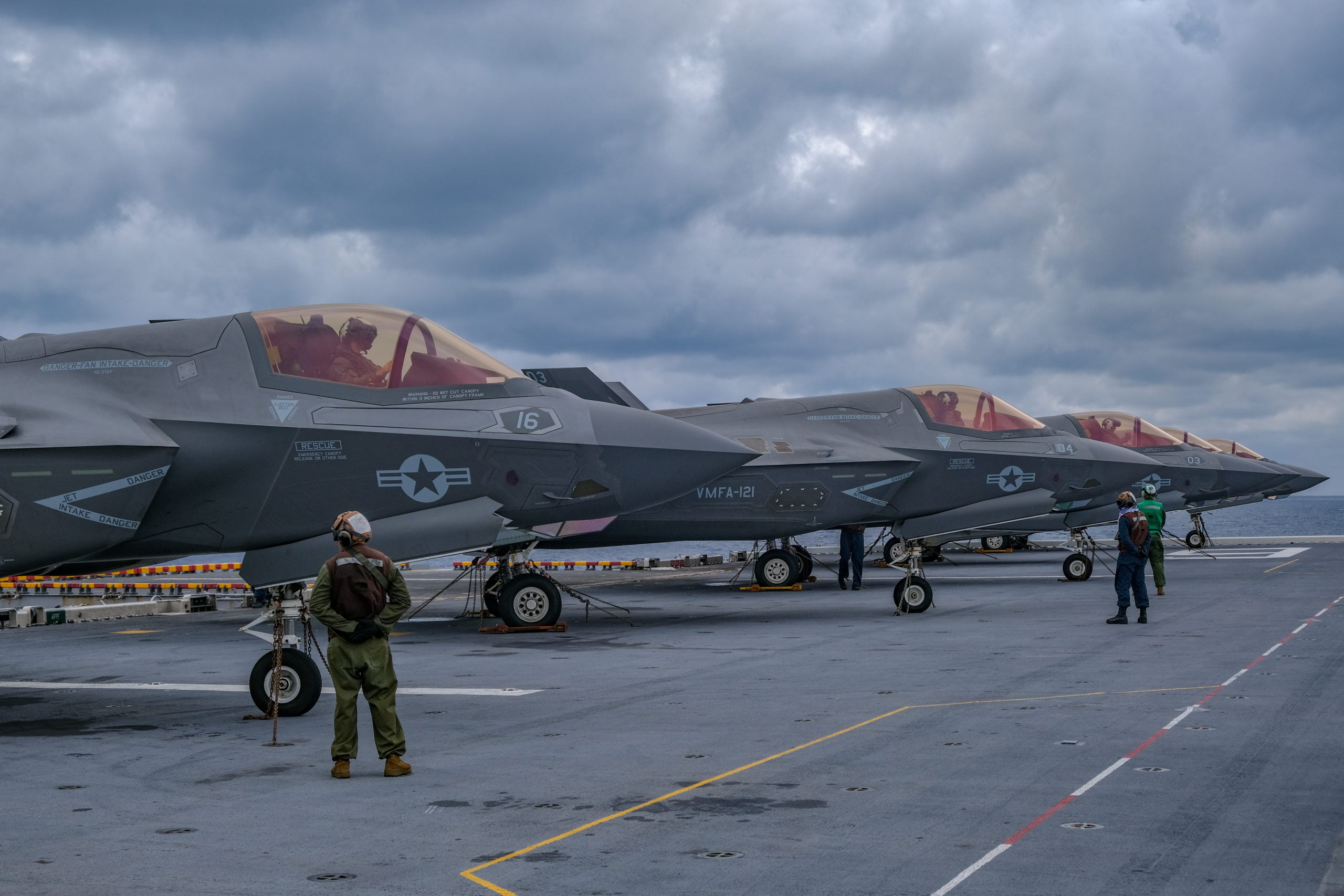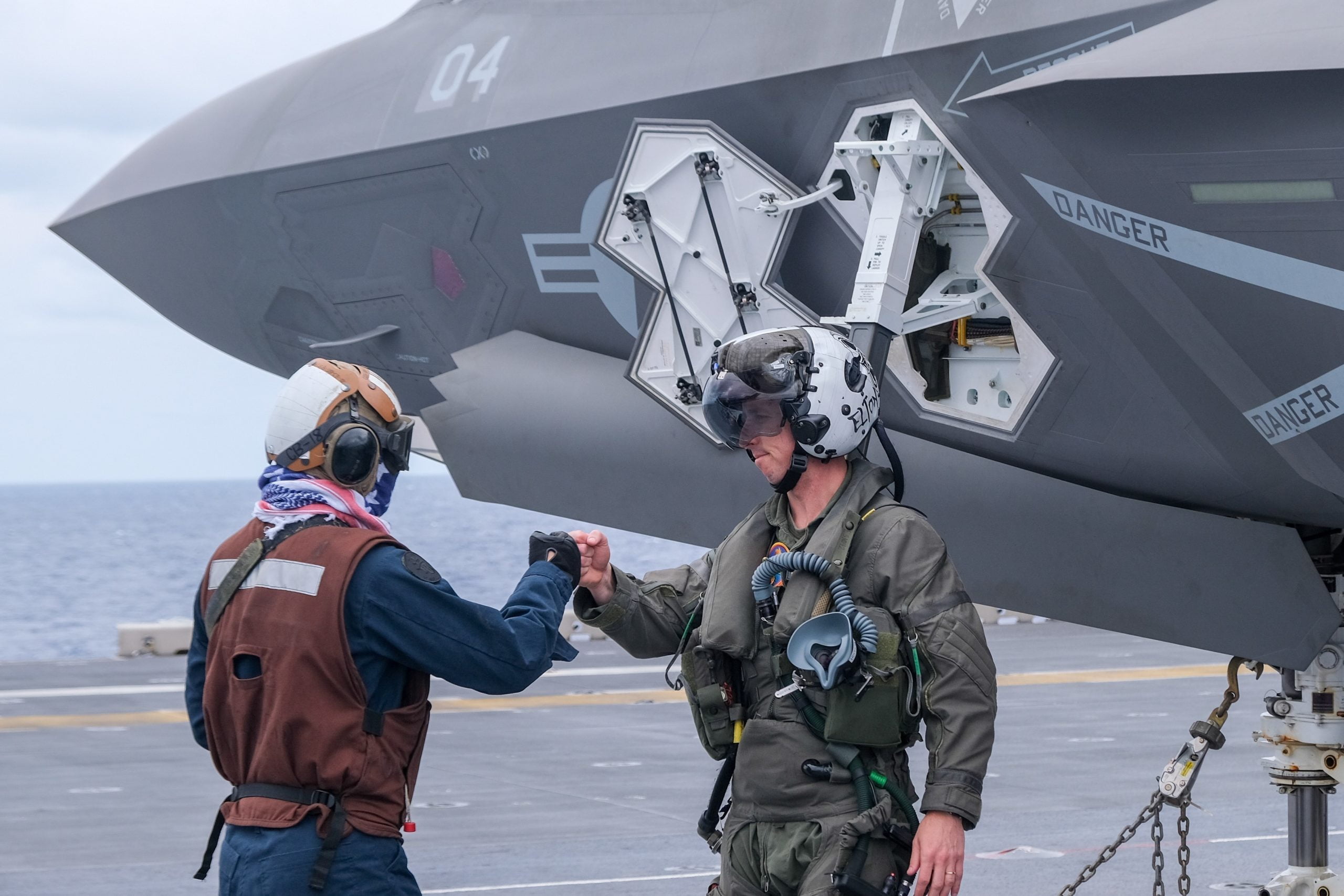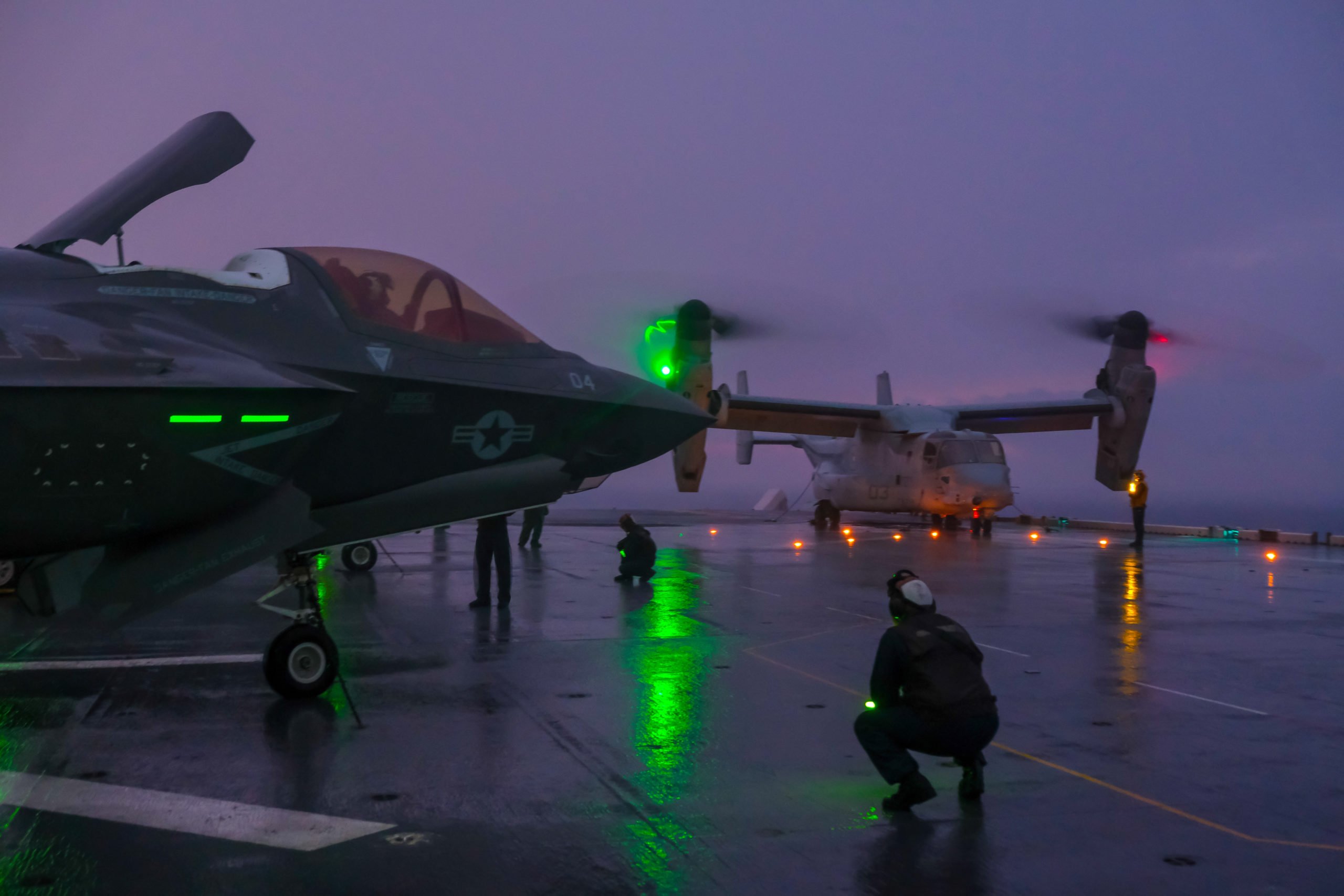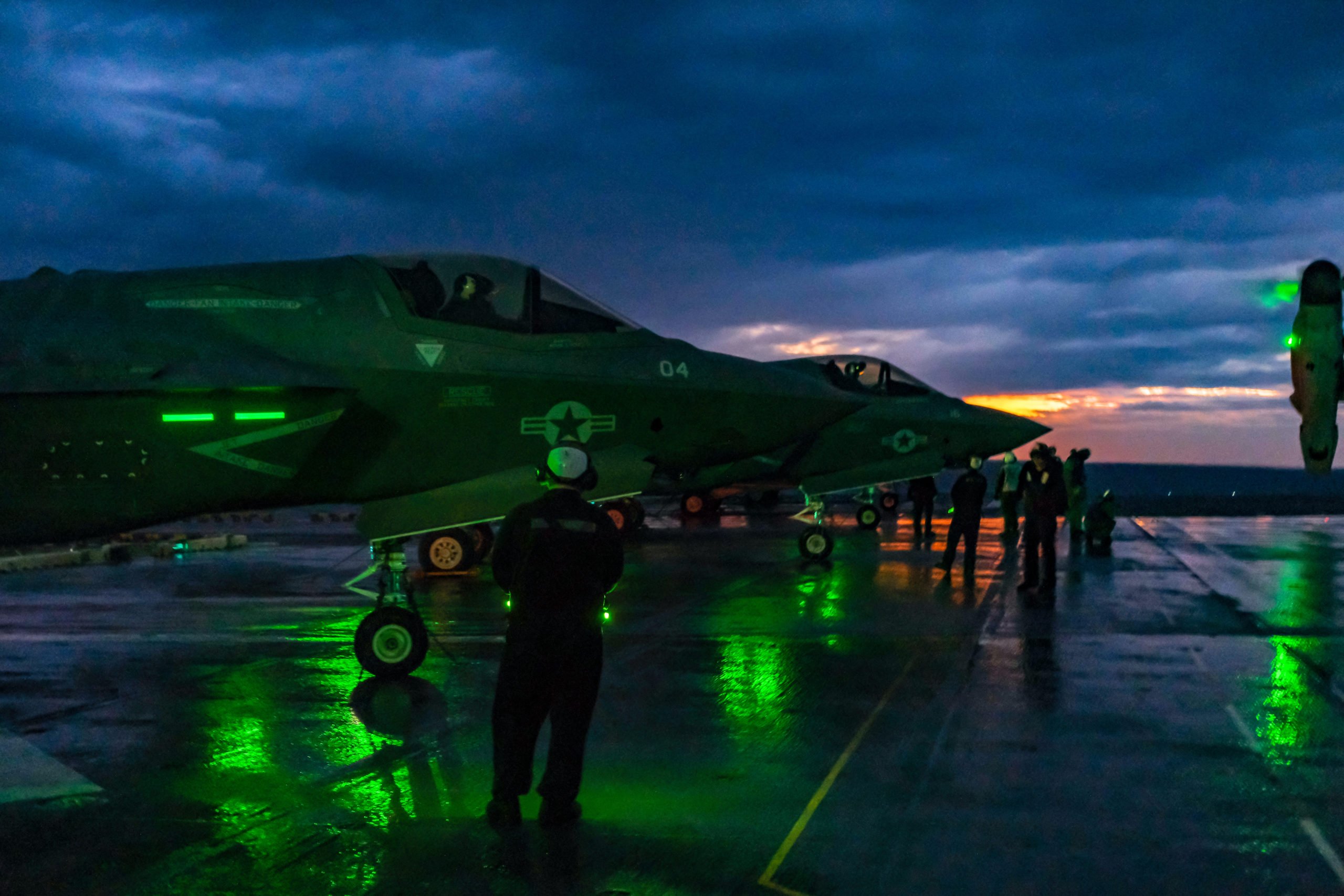By Robbin Laird
During my November 2023 visit to MAWTS-1, I had a chance to talk with Major Kyle “Elton” McHugh, tactical air department head at MAWTS-1. McHugh was originally a Harrier pilot who transitioned to the F-35B and served for three years with the first forward deployed F-35B squadron, VMFA-121.
The F-35 is a key part of answering the question of the how the USMC integrates with the joint force and supports the maritime fight. The Marine Corps F-35Bs in Japan provide fifth-generation aircraft to the Marine Corps and Joint Force in the first island chain, operating off a variety of basing options, and work closely with the USAF, USN, and allied Pacific Air Forces.
The aircraft shares common sensors, decision making systems, weapons and so on with a common U.S and allied combat fleet. In discussing the way ahead for USMC integration with the joint force, both the F-35 and the Osprey are often overlooked as key stakeholders in both current capabilities and the future force.
I asked him about his time in Japan and his perspective on working with the Japanese. He commented: “I think our enemies fear our excellence and that is a key part of deterrence. Working with the Japanese as they stood up their own F-35s, we shared a common mission and a common passion to defend our nations and our way of life. Our adversaries cannot ignore that commitment and the quality we bring to the fight.”
Throughout our discussion, Major McHugh emphasized how the Marines have worked with the joint and coalition force on integratability of the F-35, enabling a more lethal and capable F-35 enterprise. He noted that “there has been a concerted effort by MAWTS-1 to work with the Navy and Air Force weapon schools on F-35 integration. All the weapon school instructors meet in person twice a year. The goal is to standardize and shape a tri-service TTP manual, including Australian and British partners as well.”
We also discussed the coming of the Reaper and he emphasized how its inclusion is helping to learn about and shape operations in the challenging maritime environment. He noted that many of the students who come to WTI do not have deep knowledge of the maritime environment and Reaper data is helping in that learning process.
He noted the last Harrier class came to this year’s WTI and the Hornets are soon to follow. The all F-35 Marine Corps TACAIR element will be a key part of the joint and allied integration efforts as evidenced by the work on a common training manual by the weapon school instructors.
Major McHugh concluded: “At MAWTS-1 we are focused on tactical excellence. That level of competence is critical to deterrence. The events we do at MAWTS-1, both live and simulated, are executed with distributed joint partners, empowering mission commanders to compete against the evolving threat.”
Featured Photo: U.S. Marine Corps Maj. Kyle McHugh, a pilot assigned to Marine Fighter Attack Squadron 121, currently attached to Marine Medium Tilt-Rotor Squadron 265 Reinforced, 31st Marine Expeditionary Unit (MEU), departs the flight deck of amphibious assault ship USS America (LHA 6), in the East China Sea, June 24, 2021. The F-35B is launched in support of the 31st MEU’s unit level training to maintain proficiency in air-to-surface attacks, tactical intercepts, and other critical skills. The 31st MEU is operating aboard ships of the America Amphibious Ready Group in the 7th fleet area of operation to enhance interoperability with allies and partners and serve as a ready response force to defend peace and stability in the Indo-Pacific region. U.S. Marine Corps Staff Sgt. John Tetrault.
The following story published on 1 April 2014 highlights the coalition aspect of McHugh’s career but as a Harrier pilot.
U.S. Marine Corps AV-8B Harrier pilots with Marine Medium Tiltrotor Squadron (VMM) 263 (Reinforced), 22nd Marine Expeditionary Unit (MEU), conducted a bilateral aviation exercise with French air force fighter pilots in Djibouti, Africa, March 26 to April 2, 2014.
The weeklong exercise was intended to maintain proficiency and learn new tactics while building lasting relationships between allied nations.
“This has been a great experience for us,” said U.S. Marine Corps Capt. Kyle McHugh, VMM-263 (Rein.) Harrier pilot and native of Aberdeen, Md.
The MEU’s pilots flew air-to-air missions, dogfighting French Mirage 2000 pilots; as close air support, striking and bombing ground targets; combat search and rescue; tactical recovery of aircraft and personnel; and strike coordination/armed reconnaissance.
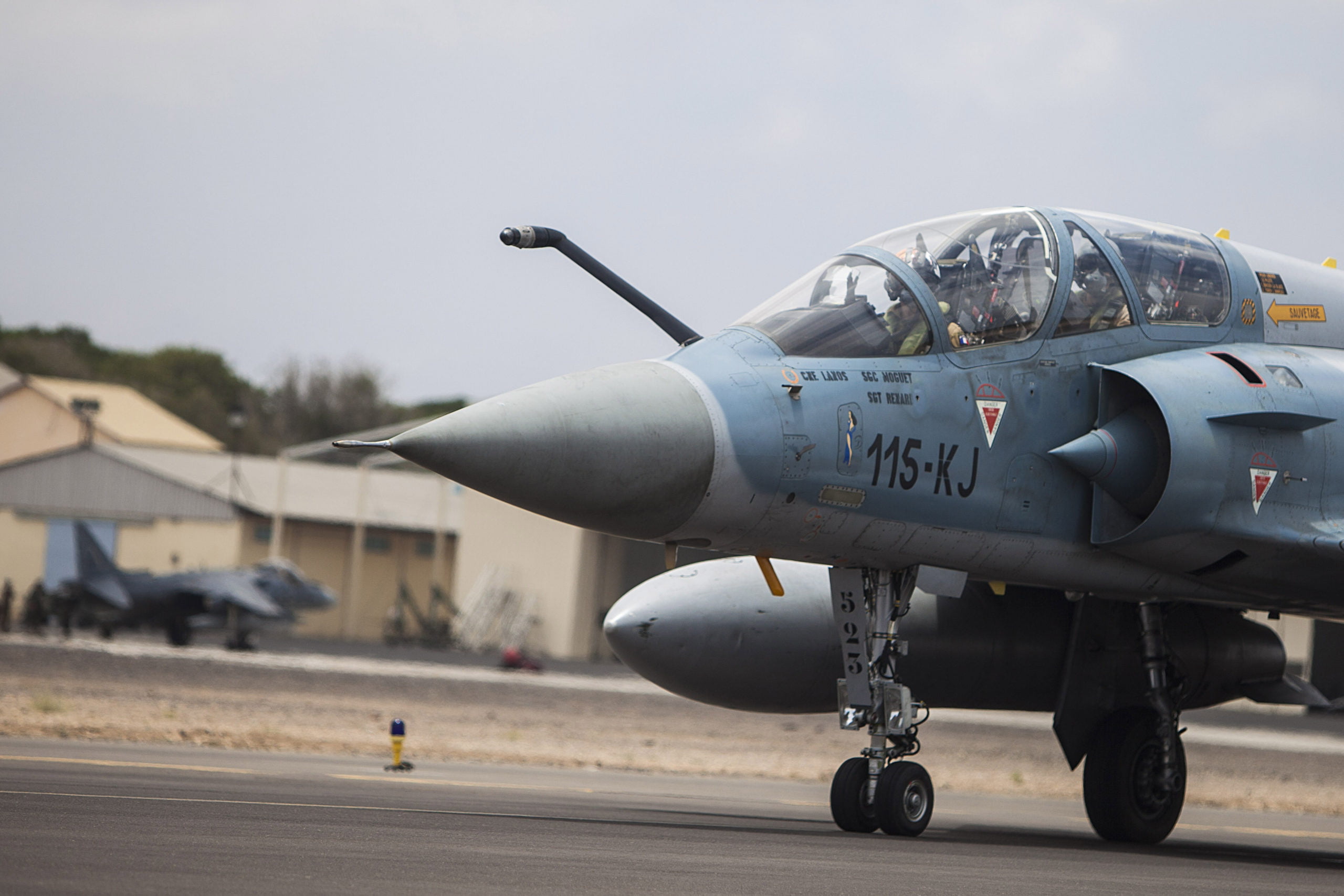
“Within the large air war, we flew those different roles and got to be a piece of the puzzle and see how the whole picture worked in actual execution,” explained McHugh, who also serves as the squadron’s assistant logistics officer. “It’s the most challenging environment we’ve had a chance to train in.”
The MEU’s pilots flew approximately 35 sorties and accumulated approximately 40 flight hours, flying missions with and against the Mirage pilots. The Mirage pilots were assigned to local French air force Fighter Squadron 03/011 Corsica, as well as visiting French air force Fighter Squadron 02/005 Ile de France.
“The missions we do here are very complex with very little time to prepare and coordinate,” said French air force Capt. Joan Dussourd, Fighter Squadron 02/005 Mirage 2000 fighter pilot. “It forces us to be very efficient.”
Each mission included several aircraft with different tasks, such as Harriers flying close air support while Mirages provide fighter support and dogfight against role player enemy Mirages. Throughout the week, there were as many as 12 aircraft participating at any given moment.
“They’re very tactically proficient in air-to-air and we consider ourselves to be very tactically proficient in an air-to-surface environment,” noted McHugh. “The ability to learn from one another in a combined forces environment, we’d be very lucky to ever have this experience again.”
In the end, the exercise helped both forces learn the other’s mindset, said Dussourd.
“I think when you fly the same missions with someone, you learn about them,” added Dussourd. “We’ve gotten to know the Marines and learned their mindset, which is very flexible. Ours is also, so we work well together.”
The squadrons and individual pilots established good working relationships throughout the exercise and built a strong foundation for other U.S. military squadrons to train or work with the French squadrons in the future.
“I’ve already seen how well trained and skilled they are in air-to-surface missions, but I was not in the air when they fought air-to-air, so I’m very interested to see how they did,” said Dussourd, who had never flown with Harriers before this exercise. “It’s important that we have chances like this in the future, to mix our knowledge. We appreciate the way the Harrier pilots work: very professional and skilled.”
The 22nd MEU is deployed with the Bataan Amphibious Ready Group as a theater reserve and crisis response force throughout U.S. Central Command and the U.S. 5th Fleet area of responsibility.


